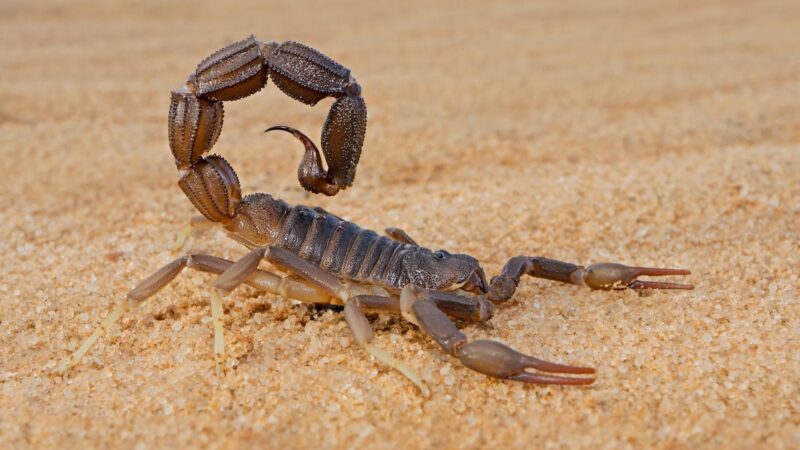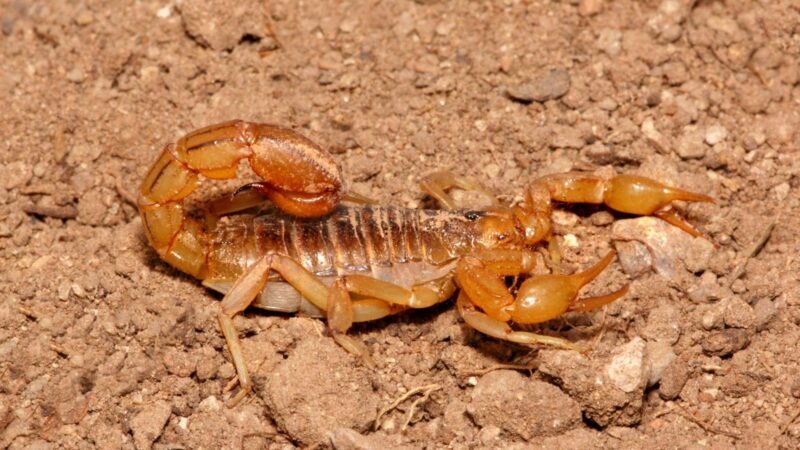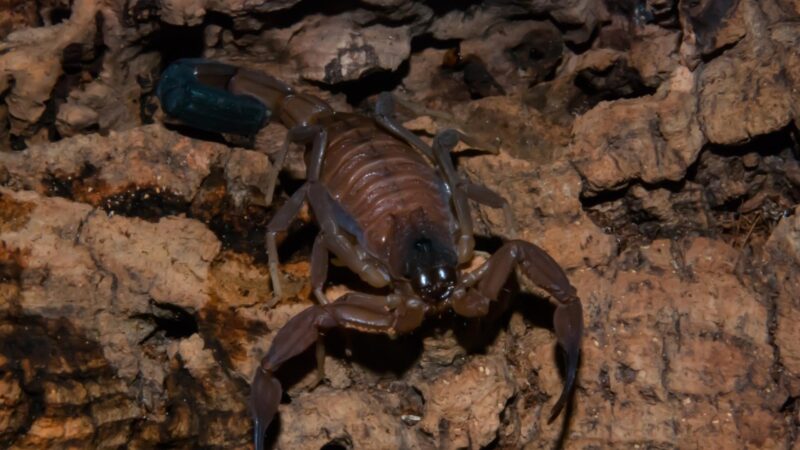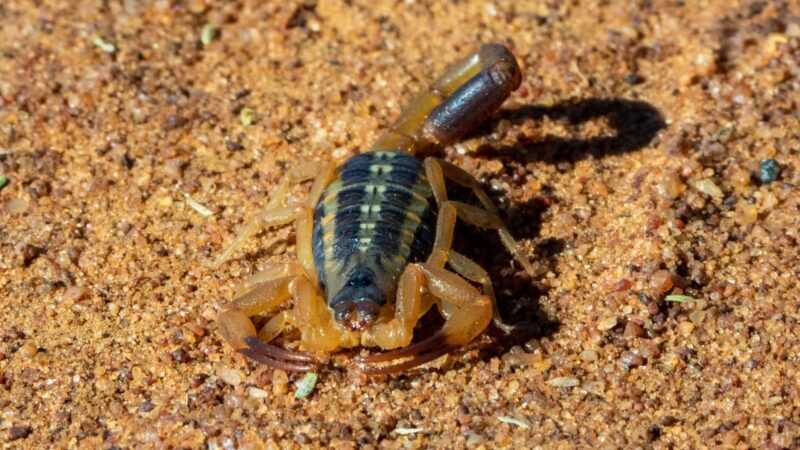Scorpions, the relatives of spiders, are arachnids that prefer to dwell in dryland habitats. It’s the reason why they’re found in Texas, which is termed the drought state.
The eastern part of the state is humid, while the western area is arid. It’s best to know whether the sting of some scorpions that you can come across in Texas is threatening or not.
What are the scorpions in Texas to watch out for? The scorpions that you have to watch out for in Texas are the Lesser Stripetail scorpion, Giant Hairy Scorpion, Lindo scorpion, Straight-faced Solifugid, Florida Black Scorpion, Texas Cave scorpion, and Striped Bark scorpion.
Among these species, only the Striped Back scorpions are found everywhere in Texas. Scorpions occupy a wide range of habitats. If ever you find them in the said state, you better know how to identify them.
You may also be worried about the consequences of the sting of scorpions in Texas. Thus, you’ll learn more about them here.
Table of Contents
Are There Poisonous Scorpions in Texas?

Fortunately, there are no poisonous scorpions in Texas. People have moderate reactions to their sting, which has only a mild effect on the nervous system.
However, some individuals will have an allergic reaction to the sting, and they should be under observation for other adverse effects.
What Part of Texas Has the Most Scorpions?
There are a total of 18 scorpion species in Texas. Big Bend National Park located in the Western part of the state has the most scorpions as it’s home to 14 scorpion species. This park is composed of the Chihuahuan Desert and Chisos Mountain.
7 Scorpions in Texas to Watch Out For
Lesser Stripetail Scorpion

As a burrowing scorpion, it burrows in sandy soils, under the rocks, and base of the shrubs. Nonetheless, it also stays in an open area. It can sting, and the pain is akin to a bee sting. The good part is that its venom can just leave your body, and it’s not lethal.
- Scientific Name: Vaejovis coahuilae
- Appearance: The color of the Lesser Stripetail scorpion can be from brown to yellow-brown. It varies, but there’s pigmentation on the dorsum that makes it pale. There are four dark stripes on the tail’s underside. They have smooth pincers accompanied by short fingers. The male’s pincers are a bit swollen.
- Color: Brown to yellow-brown
- Lifespan: Unknown
- Habitat: Grasslands, rocky slopes, creosote bush scrublands
- Length: 35 to 40 mm
- Weight: Unknown
- Diet: Spiders and other insects
- Place of Origin: Arizona, Chihuahua, Coahuila, New Mexico, and Texas
- Characteristics: Burrowing scorpion; flick and run for defense
- Venomous: Yes
Giant Hairy Scorpion

As its name suggests, this is the largest scorpion in North America, as it can be 7 inches long. Despite its relatively massive size, it has weak venom, so it doesn’t seriously affect humans.
- Scientific Name: Hadrurus arizonensis
- Appearance: This has bilateral symmetry with erect hairs on its tail. Both males and females have the same appearance.
- Color: Tan, olive green, yellow
- Lifespan: 15 to 20 years or up to 25 years
- Habitat: Crevices, small caves, abandoned burrows
- Length: 4 to 7 inches
- Weight: 4 to 7 grams
- Diet: Lizards, other scorpions, mammals
- Place of Origin: Southern and Western parts of the United States
- Characteristics: Solitary; nocturnal; motile; aestivation; terricolous; hibernation
- Venomous: Yes
Lindo Scorpion
This is sometimes misidentified as Diplocentrus diablo, but it’s flatter and redder. Burrowing into the sand is a habit of this scorpion to retain water and conserve heat efficiently. Although they become sexually mature when they’re around 8 years old, they have an incredible.
But it’s the reason why there’s not enough information regarding this species. Though it’s venomous, it doesn’t cause any severe medical conditions.
- Scientific Name: Diplocentrus lindo
- Appearance: The body of this scorpion is dark reddish-brown. It’s shorter compared to other species with a stocky tail.
- Color: Reddish brown
- Lifespan: Not specified but long-lived
- Habitat: Sandy desert
- Length: Up to 1.5 inches
- Weight: Unknown
- Diet: Insects
- Place of Origin: Southern Texas and Northeastern Mexico
- Characteristics: Burrowing scorpion
- Venomous: Yes
Straight-Faced Solifugid
Also known as wind scorpion, it’s fond of hunting on a hot, windy evening, and you might come across it on your porch. But you can also see it during the day. It can bite in defense, but it’s just like a pinch. The good news about this species is that it doesn’t have a venom sac.
- Scientific Name: Solifugid
- Appearance: Its vertically curved jaw is distinctive, as well as its three pairs of legs. The first pair called pedipalps is slender and works as a sensor organ.
- Color: Brown or light brown, black
- Lifespan: Up to one year
- Habitat: Under porch light
- Length: Around 1.5 inches
- Weight: 56 grams
- Diet: Spiders, insects, arthropods
- Place of Origin: North America, North Africa, Western Asia
- Characteristics: Nocturnal; diurnal
- Venomous: No
Florida Bark Scorpion

It’s a scorpion species that can thrive in captivity, so it can be a pet placed in an aquarium. Even though it’s venomous, it’s less toxic than the others from the same genus.
But its sting can cause redness, itching, swelling, and pain. It can also become serious if the patient experiences cardiac effects.
- Scientific Name: Centruroides gracilis
- Appearance: The funny thing about Florida Barks scorpions is their color variations. Some may have a dark brown body with reddish or yellowish legs. They may have red or orange chelae with black tails. Siblings may have different colors, and they may not take after the coloring of their parents.
- Color: Red, black, brown, orange, yellow
- Lifespan: Up to 6 years
- Habitat: Under tree bark, rocks, and rubbish, In houses’ walls
- Length: 2 to 4 inches
- Weight: Around 50 grams
- Diet: Roaches, crickets, termites
- Place of Origin: Tropics
- Characteristics: Nocturnal
- Venomous: Yes
Texas Cave Scorpion
The Texas cave scorpion is considered a troglophile species despite having no pigmentation, elongated appendages, and eyes. It can survive cave dwellings without the characteristics expected from troglophile scorpions.
This scorpion usually stays at the cave’s entrance. Furthermore, it’s widespread and commonly seen in Texas caves.
- Scientific Name: Pseudouroctonus reddelli
- Appearance: This is a large and dark-colored species with tan mouthparts and legs.
- Color: Blackish, mahogany brown, reddish, tan
- Lifespan: Unknown
- Habitat: Rocky areas, caves, grottos, or limestone
- Length: 1.5 to 2 inches
- Weight: Unknown
- Diet: Cave crickets
- Place of Origin: Central Texas
- Characteristics: Trogophilic
- Venomous: Yes
Striped Bark Scorpion

This is a semi-arboreal scorpion that is common in the United States. It’s an active forager, but it doesn’t burrow. You’ll likely find it under fallen logs, dead vegetation, and in your residence. Although it’s venomous, no reported deaths are connected with this species. The usual effects of its sting are pain and swelling.
- Scientific Name: Centruoides vittatus
- Appearance: There are two thick stripes on the upper part of this scorpion’s abdomen. It has slender pincers and a tail.
- Color: Yellowish, tan, black
- Lifespan: 4 to 5 years
- Habitat: Under rocks and boards, in detritus, attics, or human dwellings
- Length: Around 2.4 inches
- Weight: 0.5 to 5 grams
- Diet: Other scorpions, insect prey, spiders, solfugids, and other arthropods
- Place of Origin: Northern Mexico, United States
- Characteristics: Burrower; active forager
- Venomous: Yes
Frequently Asked Questions
What Do You Do if You Get Stung By a Scorpion in Texas?
The scorpions in Texas cause moderate effects on people that they bite. The venom from these scorpions has only a little effect on the human nervous system.
The first thing that you should do when you get stung is to apply an ice pack to relieve the pain and swelling.
If pain and swelling become worse, you have to seek medical assistance, especially if difficulty of breathing is experienced. Some people may have allergic reactions to the scorpion’s sting.
How Do I Keep Scorpions Out of My House in Texas?
Here are the things that you can do:
- Place the garbage or trash above the ground.
- Don’t let boards, logs, stones, bricks, trash, and other objects get in contact with the walls of your house or building.
- Mow regularly and prune trees that can give passage to the scorpions to get onto your roof.
- Don’t bring the firewood inside your house unless you directly place it on the fire.
- Installing weather-stripping on doors and windows can also help to keep scorpions out of your house.
What Kills Scorpions Instantly?
You can use pesticides like TERRO Scorpion Killer Aerosol Spray and Harris Scorpion Killer to kill scorpions instantly.
The TERRO Spray can be directly sprayed on the scorpion, then it kills them within half an hour. You may also spray it on the crevices and corners of your house. Harris can be sprayed on the perimeter of your house and garage. Let it dry so it can exterminate scorpions.
- Kills scorpions, spiders, ants, cockroaches, crickets and other...
- Residual control for up to 6 weeks
- 2-way precision spray nozzle can be applied as a wide spray or...
- Can be used indoors and outdoors
Why Do I Have Scorpions All of the Sudden?
Scorpions silently dwell in your attics without disturbing you. It will get into living spaces once the temperature rises.
How Do You Find a Scorpion Nest?
Scorpions don’t build a nest, so you’d likely find them under the loose tree bark, wood piles, stones, logs, and fallen snags.
Does One Scorpion Mean More?
It doesn’t always mean that there’s infestation when you see one scorpion. Seeing it inside your house means there’s a passage that allows it to get in.
How Do I Protect My House From Scorpions?
You can protect your house from scorpions by using powder formulation like Evergreen Pyrethrin Dust Insecticide. Apply them to the concrete’s foundation, cracks, crevices, and possible entrance to your house.
Summary
Lesser Stripetail scorpion, Giant Hairy Scorpion, Lindo scorpion, Straight-faced Solifugid, Florida Black Scorpion, Texas Cave scorpion, and Striped Bark scorpion are the species that you have to be watch out for in Texas.
Although their venom is mild, you have to be on guard and protect yourself to get bitten. You can’t tell whether you have an allergic reaction to its sting.
List of Sources
Scorpions. (2010). Texas A&M AgriLife Extension.
Striped Bark Scorpion. Texas A&M AgriLife Extension.
Steinfeld, J., Zemel, D. (2013). Hadrurus arizonensis. Animal Diversity Web.
Field Guide to Spiders and Scorpions. (2018). National Park Service U.S. Department of the Interior.
Hu, X. P., Greer, G. C. (2021). Scorpion Management in Residential Homes. Alabama A&M & Auburn Universities Extension.
